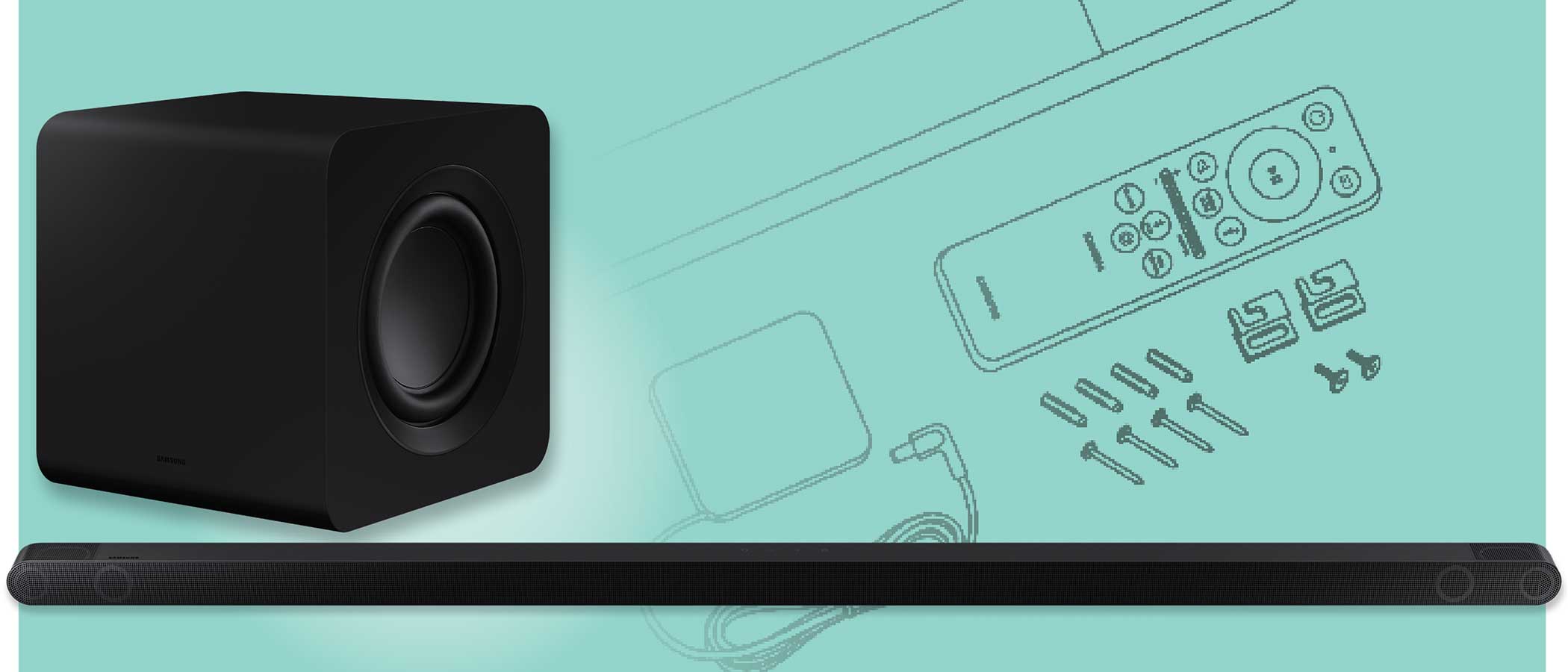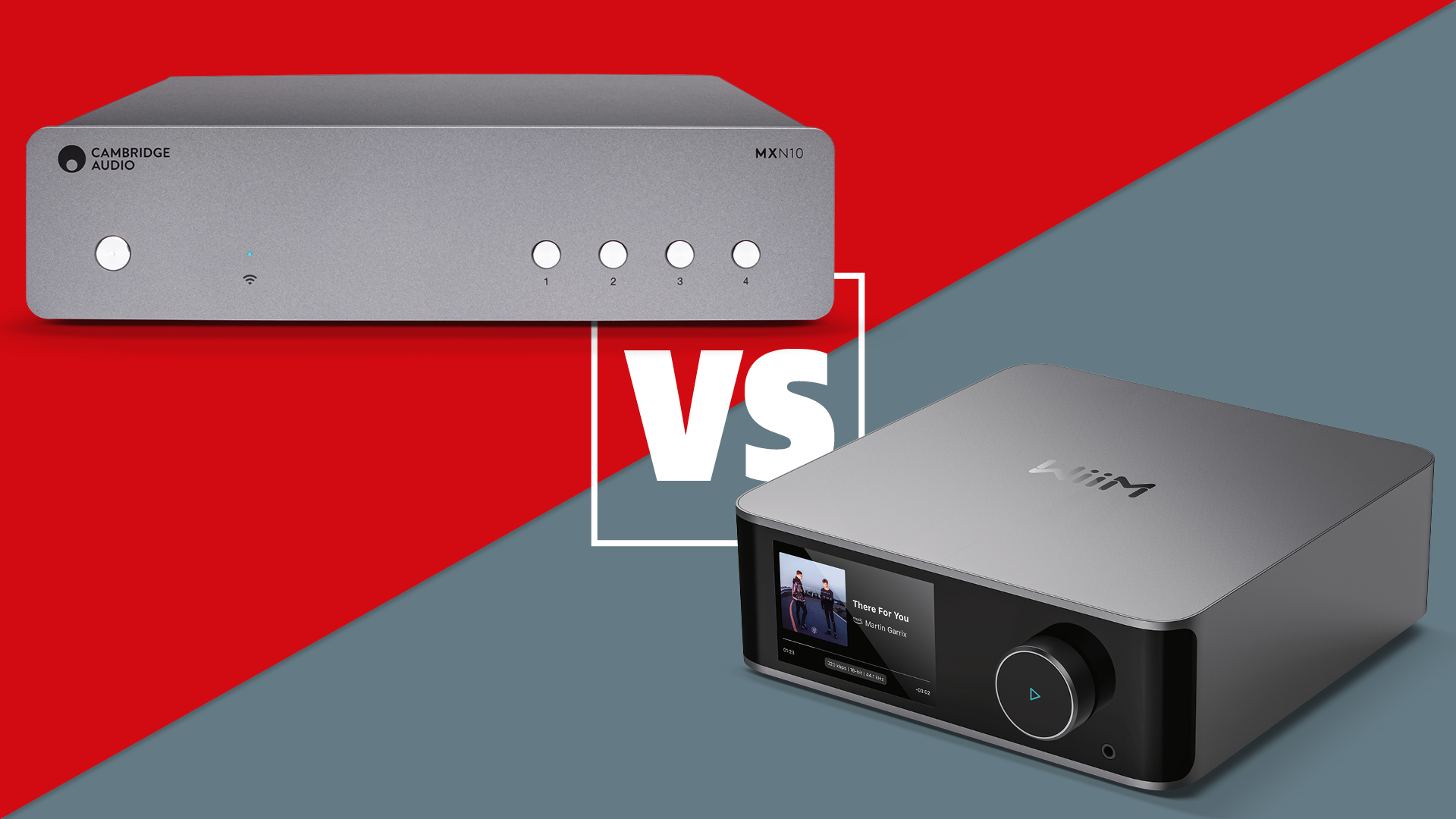Sound+Image Verdict
An excellent little subwoofer allows this combo to deliver a high quality sound despite the bar’s slender dimensions, justifying even its full price – and it is often available for less.
Pros
- +
Crisp dynamic sound
- +
Clean and balanced bass
- +
Genuine height delivery
- +
Optional rear expansion
Cons
- -
HDMI ARC only, so check compatibility in advance
- -
Mini-HDMI socket
Why you can trust What Hi-Fi?
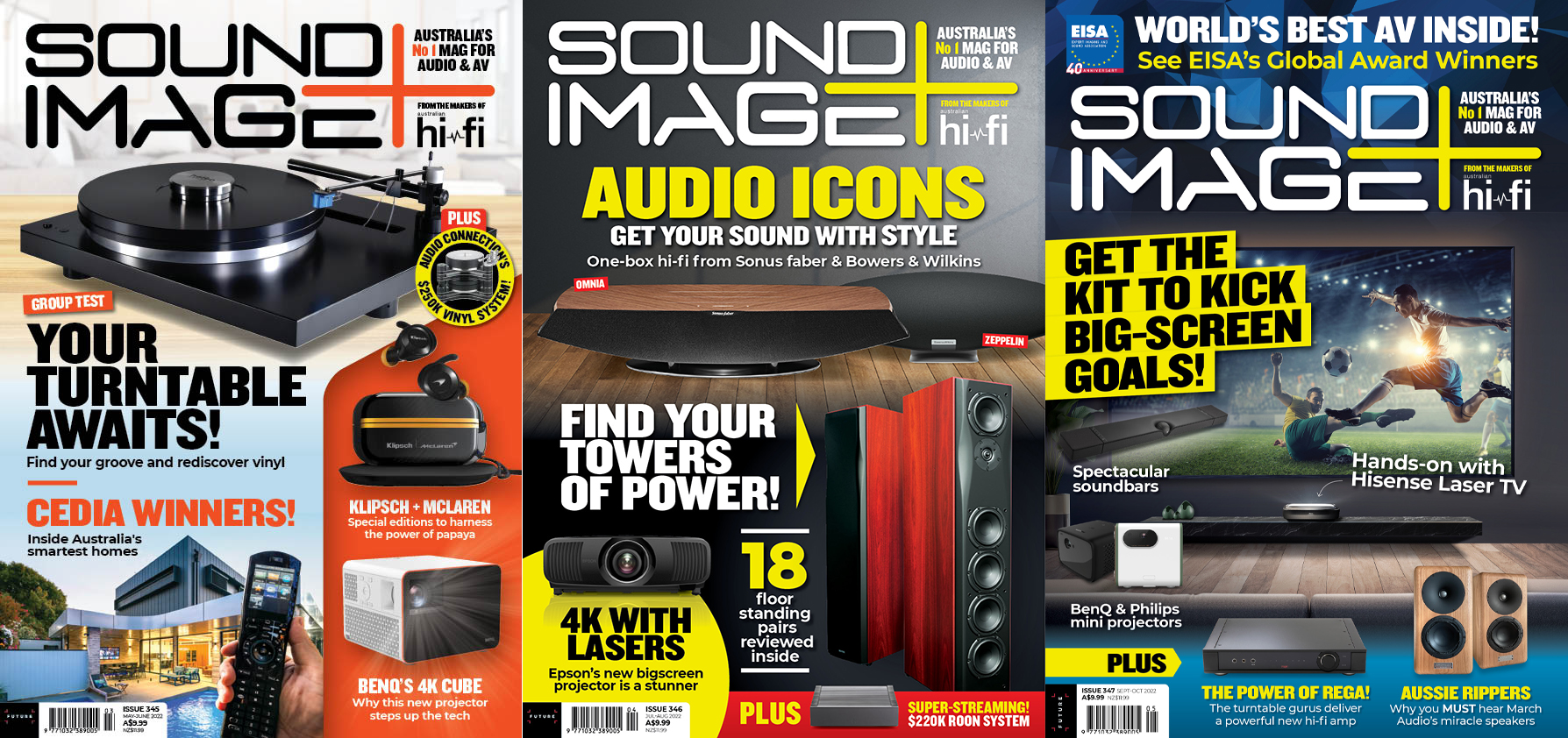
This review originally appeared in Sound+Image magazine, Australian sister publication to What Hi-Fi?. Click here for more information on Sound+Image, including digital editions and details on how you can subscribe.
Samsung has been releasing great-sounding soundbars ever since it set up an audio lab in California, as part of Samsung Research America under Allan Devantier.
The lab includes testing and measuring facilities that follow the tenets of the legendary National Research Council of Canada as developed by the equally legendary Dr Floyd Toole, and this is no coincidence, since Devantier came to Samsung from Harman (before Samsung bought the company). He professed his devotion to Floyd Toole’s methods when we spoke to him back in 2017, just as the first fruits of the Californian lab arrived in Australia.
“I’ve known Floyd since I was about 17 years old, so he’s like a father to me,” Allan Devantier told us then. “I wouldn’t be here today if it wasn’t for him and my years at Harman learning from him, and of course other people like Laurie Fincham was there at the time, Don [D.B.] Keale, Richard Small – these are all giants of the industry.
"So the learning experience there, I was soaking it all up in the 1990s, and the idea of really well-controlled blind listening tests, really well-done measurements – all the things that Floyd talked about for 30 years – has been just as important for me to do, and translate that and get that done at headquarters, as much as just bringing new technology like better woofers and tweeters.
"And it’s interesting that now, today, my job is to do for Samsung what Floyd did for me, right?”
Also interesting was that from the start the Samsung lab in California didn’t use its facilities to design some new esoteric high-end stereo speakers, but instead applied its abilities to the more effective design of soundbars, and their subwoofers.
The results have been wildly successful in both sound and sales; Samsung is now world soundbar leader.
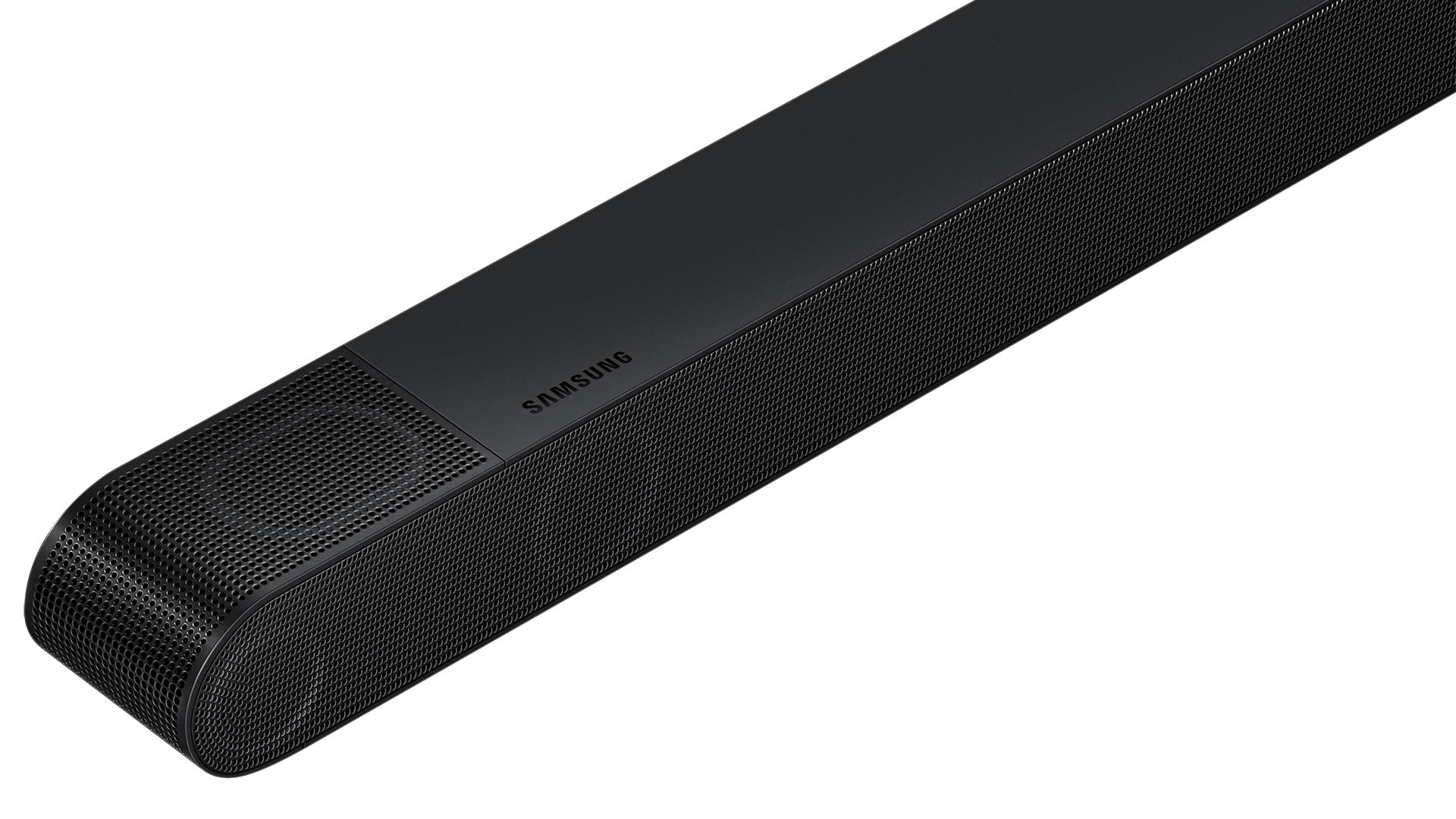
Build & design
As the California lab enters its tenth year, the S800B represents something new. It slims down the bar quite remarkably, so slim that we could close our forefinger and thumb around it; the cross-section is roughly a 4cm square.
The bar is long, however – 116cm – but since this matches a 55-inch TV nicely, it’s unlikely to outscale a modern TV bench, and it certainly looks far less daft when wallmounted than do larger soundbars. A full wall-mount kit and instructions are included with the S800B.
Visually desirable, then, but such an “Ultra Slim” design creates issues, and not just the obvious sonic one of having much reduced cabinet volume.
The drivers are also necessarily smaller: unspecified, but we think three sets of small tweeters and elongated 65×25mm drivers facing forward, plus two oval 25×40mm drivers firing up for height content. There may be something else in the ends; we couldn’t tell through the grille.
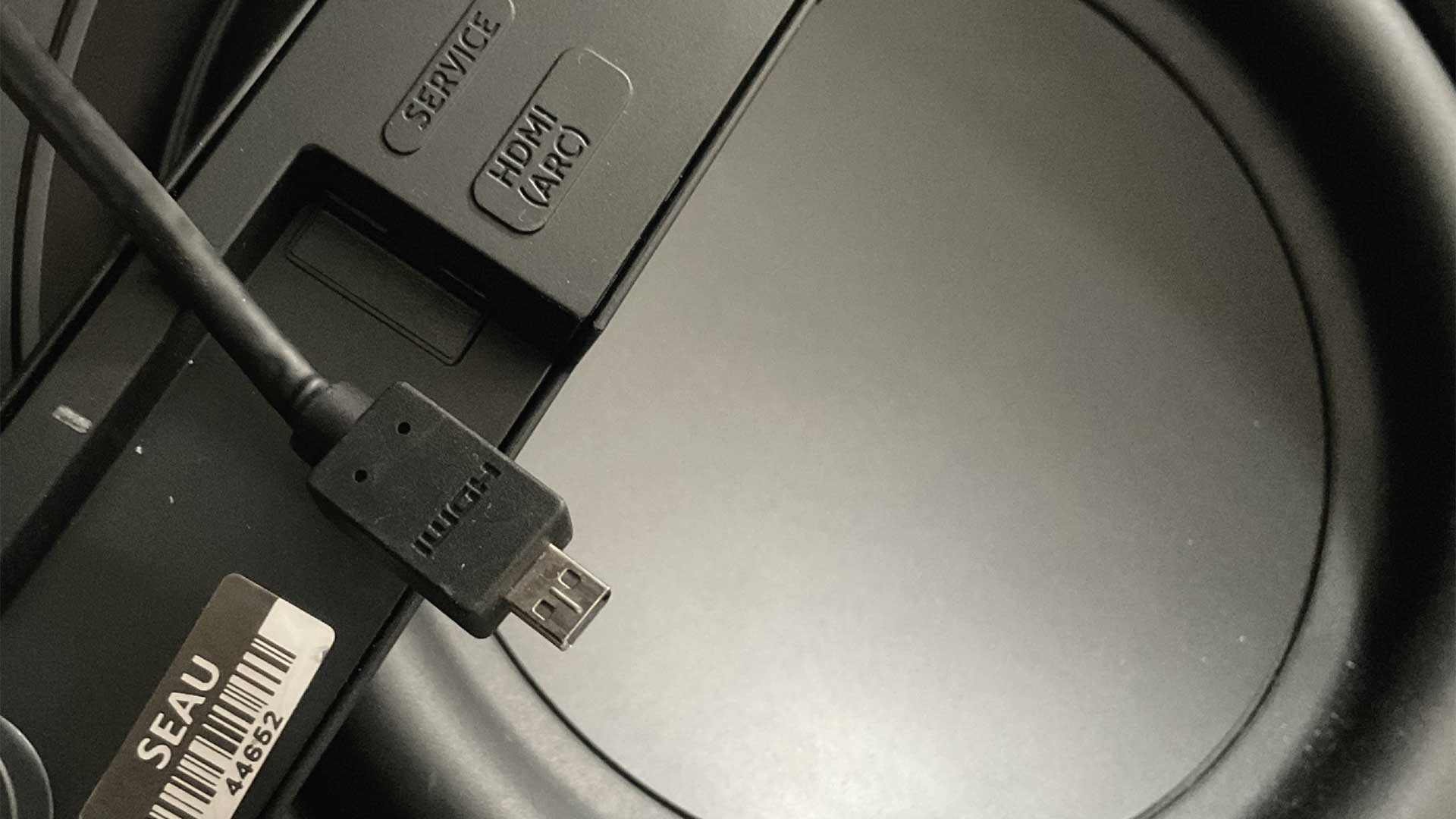
Indeed the bar is so slim that Samsung hasn’t been able to fit in proper a proper HDMI socket. Instead it’s got a mini-HDMI connector, with a mini-HDMI-to-HDMI cable provided in the box (see image above).
And there are no other sockets apart from the power connection, so it’s HDMI or the highway, no fallback optical or analogue input. You’d better hope your TV’s HDMI ARC works with this one. Although there is one alternative if you have a 2022 Samsung TV (BU8000 and above, say the specs): wireless Dolby Atmos transmission by Wi-Fi. Clever!
This bar appears in one product video in white; this seems a finish given only to certain retail outlets, and released as the HW-S801B. It seems otherwise identical.
There are a great many features included, such as Samsung’s SpaceFit Sound+ and Q-Symphony, which will work when used with a recent Samsung TV, but the key takeaway for all users is the inclusion of Dolby Atmos and DTS Virtual:X processing. (Why not actual DTS:X, given its upfiring drivers? Presumably because very few TVs will pass DTS:X to their HDMI ARC output from a connected device, while no streaming services use DTS:X sound.)
Once on Wi-Fi, the bar can be connected to and controlled from Google or Alexa voice assistants, in addition to the little physical remote control, and most likely your TV remote too.
Given the slim bar, the subwoofer is crucial to fill out the sound. Samsung’s sub is neatly compact, roughly a 24cm cube, with an active driver on one side, passive radiator on the other. You can also add physical rear speakers to this system, via the SWA-9500S/XY (£199 / $299 / A$349); these wireless rears, each of which will require a mains cable, combine rear surrounds with Atmos-enabled height drivers, so adding these would complete a 5.1.4-channel system.
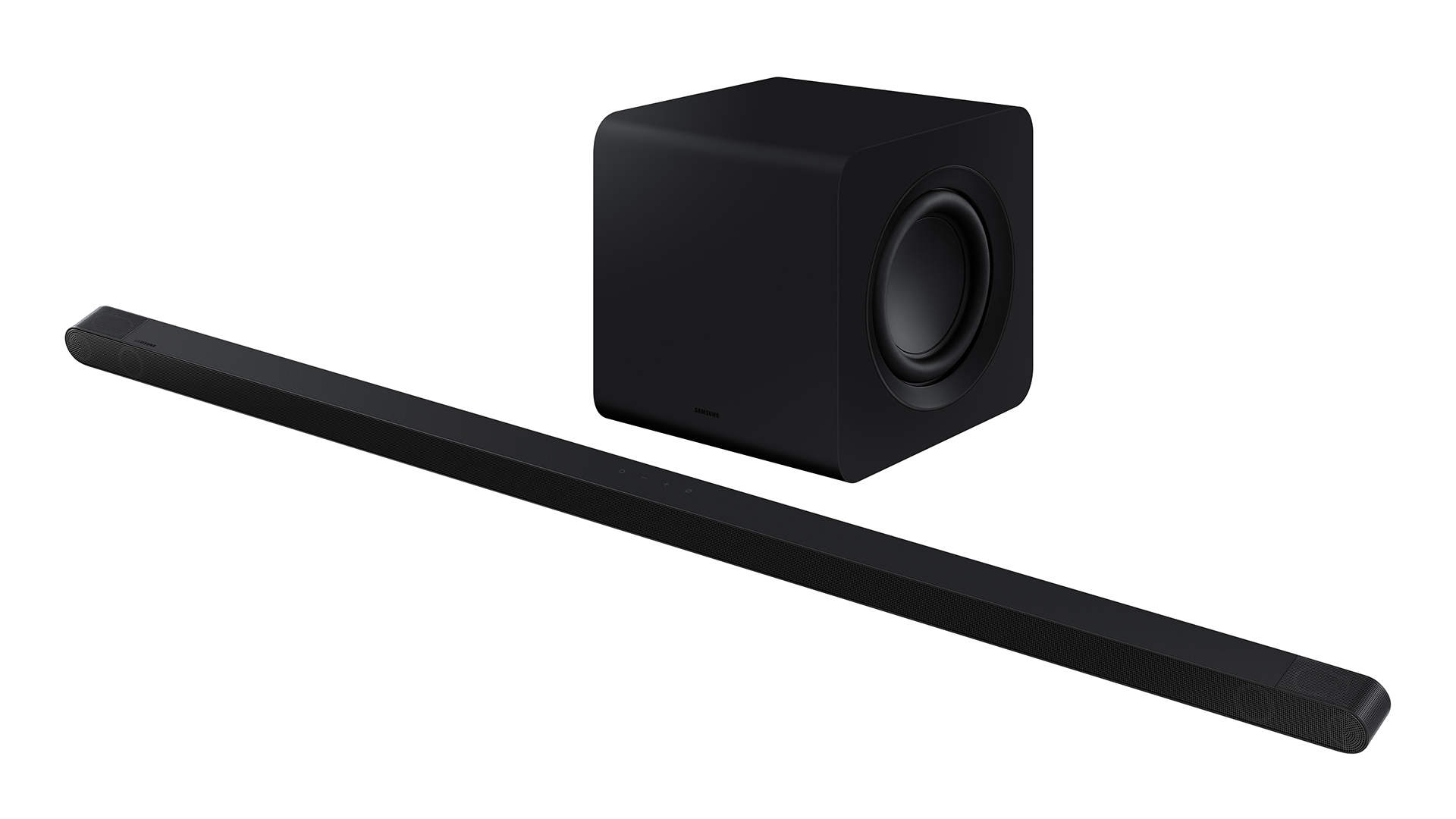
Sound & performance
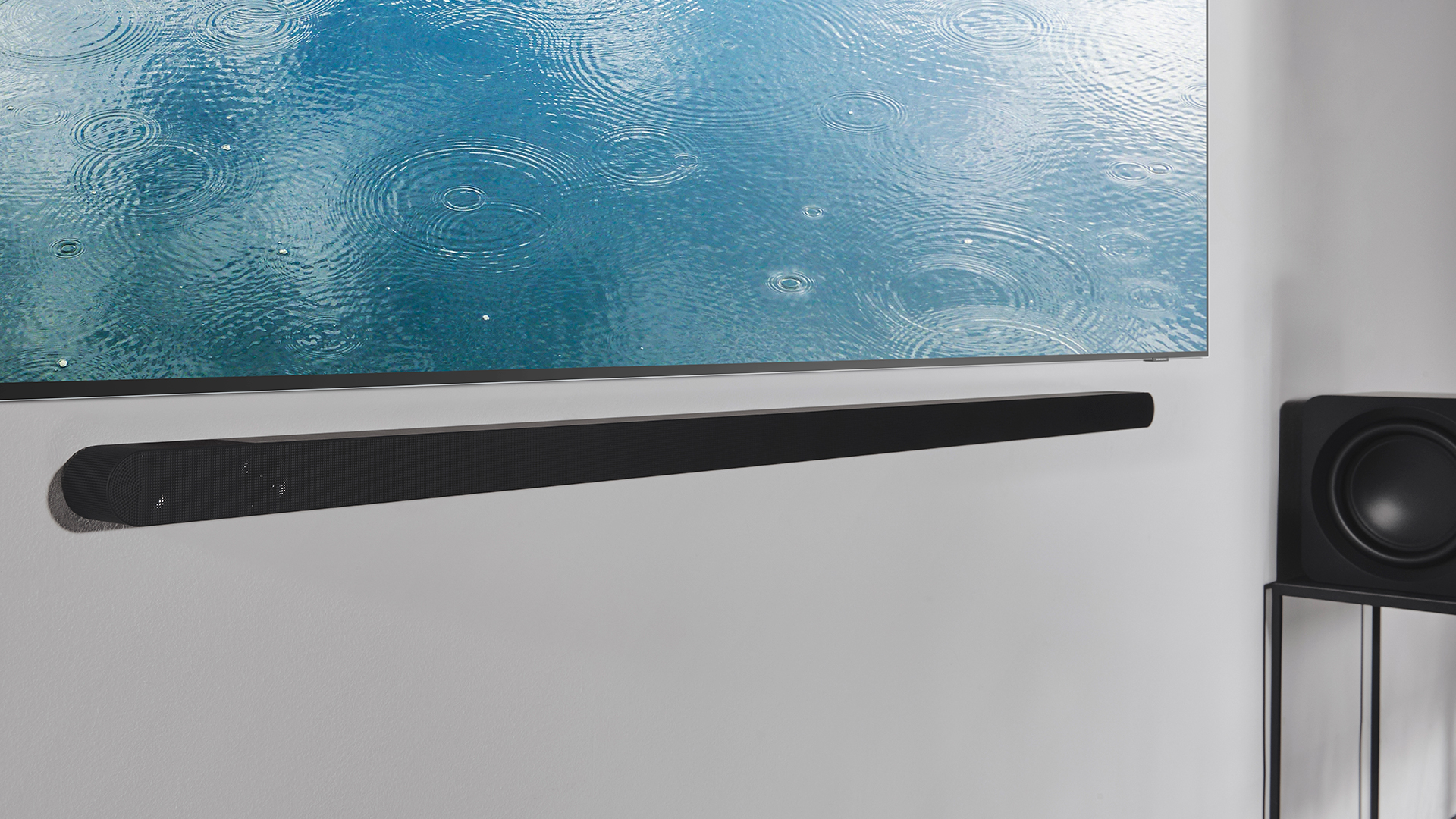
Inputs: HDMI ARC, Bluetooth (SBC only), Wi-Fi, Chromecast, AirPlay 2
Soundbar dimensions (whd): 116 x 38 x 40cm
Weight: 1.4kg
Subwoofer dimensions (whd): 23.8 x 24 x 23.8cm
Weight: 6.4kg
With no inputs other than the mini-HDMI ARC connection, we were pleased to find the bar worked instantly with the Samsung S95B OLED TV into which we first plugged it, and also with a visiting TCL Roku TV. However we never got it to play from 2021 Samsung TV we tried, nor an older Toshiba TV, no matter how we fiddled with their settings. So we’d suggest having your dealer check compatibility in advance for your particular TV, and to allow a return if it doesn’t work.
It’s certainly worth doing, because Samsung has delivered another dynamite soundbar performance for the price, and it’s a success of teamwork, with both the bar and the subwoofer being essential to the sound.
Indeed the sub is something of a star. Its bass descends to real depths, creating output from signal even below 30Hz, and it manages to sound not only resounding but astoundingly tight for a subwoofer doing so much from a cabinet so small.
There’s a moment 1:16 into Jumanji: Welcome To The Jungle where a deep chugging shakes a huge shed before a helicopter bursts through its timbers: the chugging not only had huge weight but stopped and started within each chugbeat, where many small subs deliver this as a blur.
The helicopter exits and flies overhead – an Atmos treat with genuine surround, but not possible here with 3.1.2. Nevertheless, the space generated was impressive; the soundstage stretched wide beyond the bounds of the bar despite there being no side-firing speakers, and yes, large in height too, as if a large semi-circle of sound was being created up and around the screen area.
Better still, the orchestral score sailed on unaffected above the action in the best Indiana Jones fashion. It sounded just a little thinned of lower mids, and a frequency sweep revealed a significant dip in response centred on 170Hz, just above the crossover point; this is perhaps a gap between the ability of the sub to go high and the super-thin bar to go low.
It doesn’t intrude on listening much. Nor was there much sense of power limitation, so that while of course the mayhem of the final fight in Justice League will sound bigger and excite more air from a full surround system, it’s hard to criticise the size and quality of sound here. This UHD Blu-ray also had DTS-MA 5.1 available; we tried this with the DTS:X Virtualiser setting but it sounded a little phasey, perhaps because of the vertical upscaling.
‘Standard’ mode seemed the clearest rendition of 5.1 material, even though the top drivers are out of action in this mode.
‘Standard’ is also the only mode which doesn’t upscale stereo content to the full driver complement; everything else plays two-channel content in 3.1.2, even, surprisingly, the Game mode, which you might expect to switch off all non-essential processing.
The ‘Adaptive Sound’ setting is said to “analyse the audio signal to deliver optimised sound based on each scene”, which sounds a bit worrying but actually yielded good sound in nearly every scenario we gave it, excepting only our preference for 5.1 as 3.1.
As for music, once we’d connected the bar to Wi-Fi using Samsung’s SmartThings app we enjoyed pretty enjoyable tunes sent by AirPlay 2 from an iPad Pro. There’s a wide stereo spread, just a little peakiness on female vocals (that thinning again), and this was accentuated when we tried any sound mode other than Standard. A strong pass here.
What didn’t we like? As a byproduct of the Ultra Slim design, there’s no display, just a few lights, and a lightly thin computery voice, which we couldn’t find an option to turn off (it’s redundant if you use the SmartThings app to show status). Otherwise nothing else, so long as HDMI-ARC proves compatible.
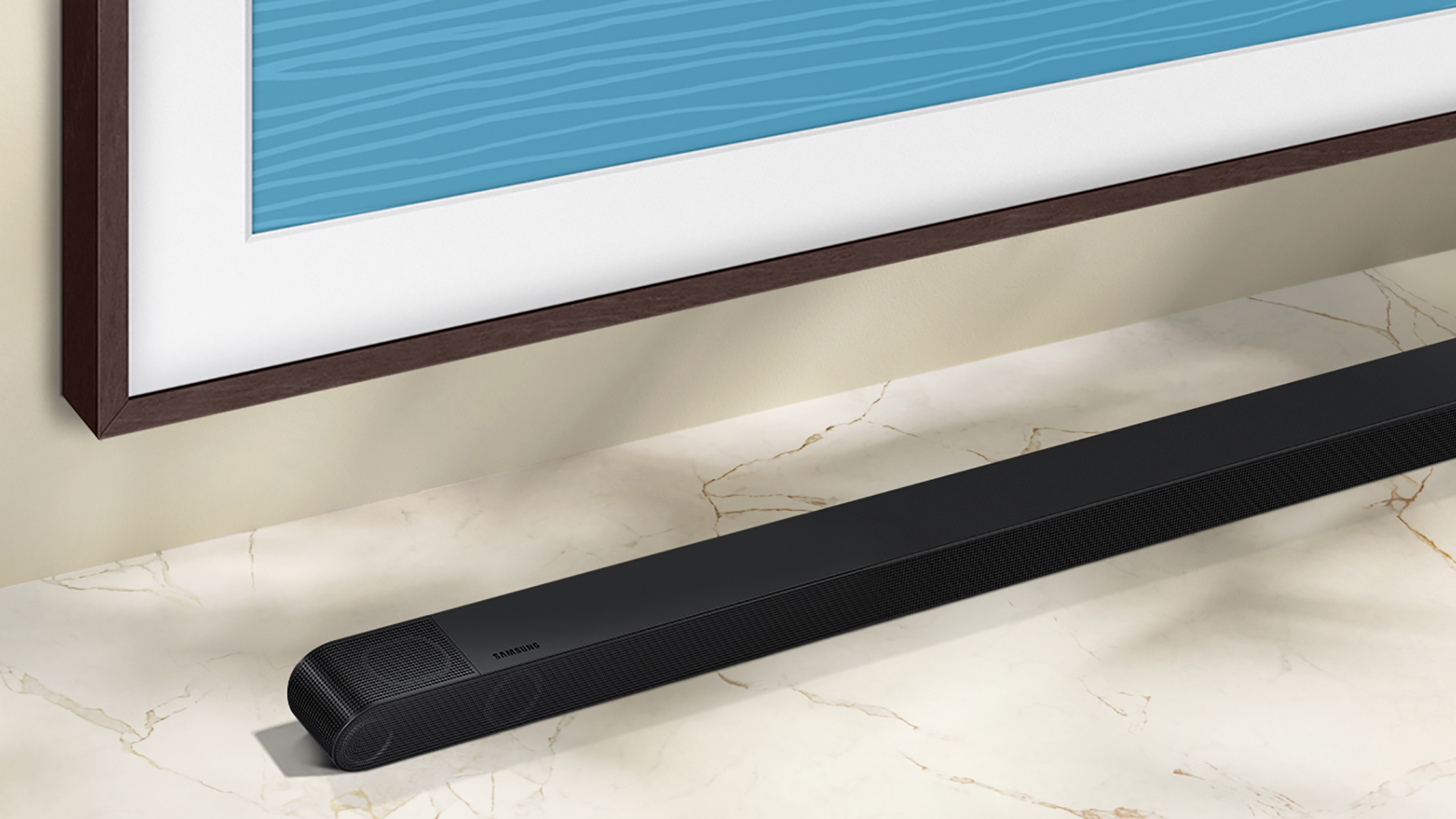
Verdict
We'd rate this slim bar and wireless subwoofer package as performing very well at its price, though its price seems unusually variable, and the 'RRPs' pleasingly favourable to Sound+Image's Australian readers.
So it is currently listed at £649 in the UK, $899 (plus taxes) in the US, and AU$999 in Australia. But as we write this, the actual prices on Samsung's websites are £649 in the UK, down to US$599 in the States, and Aussies offered AU$599 for the black S800B, and a remarkable AU$499 for that white S801B version. Samsung varies such offers frequently and without warning, so choose your time to buy!
Whatever you end up paying, for your money you'll get a brilliantly-engineering superslim bar, not only useful for its size but sophisticated in having Wi-Fi to allow plenty of streaming options. Its excellent little subwoofer allows the combo to deliver a high quality sound which justifies even its full price, especially given the bar’s slender dimensions and style advantages.
It’s another undeniable triumph for the team at Samsung’s audio lab.

Jez is the Editor of Sound+Image magazine, having inhabited that role since 2006, more or less a lustrum after departing his UK homeland to adopt an additional nationality under the more favourable climes and skies of Australia. Prior to his desertion he was Editor of the UK's Stuff magazine, and before that Editor of What Hi-Fi? magazine, and before that of the erstwhile Audiophile magazine and of Electronics Today International. He makes music as well as enjoying it, is alarmingly wedded to the notion that Led Zeppelin remains the highest point of rock'n'roll yet attained, though remains willing to assess modern pretenders. He lives in a modest shack on Sydney's Northern Beaches with his Canadian wife Deanna, a rescue greyhound called Jewels, and an assortment of changing wildlife under care. If you're seeking his articles by clicking this profile, you'll see far more of them by switching to the Australian version of WHF.
